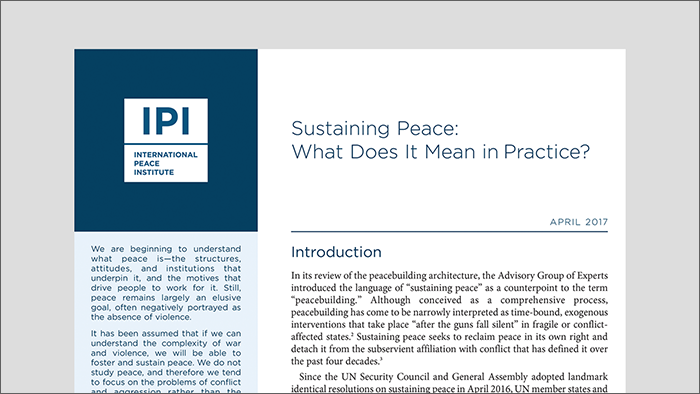
In its review of the peacebuilding architecture, the Advisory Group of Experts introduced the language of “sustaining peace.” With peacebuilding increasingly interpreted as time-bound interventions in fragile or conflict-affected states, sustaining peace seeks to reclaim peace in its own right and detach it from conflict. But what does sustaining peace mean in practice?
This issue brief seeks to unpack the definition of sustaining peace and provide examples of what it looks like at the national and international levels. It also aims to clear up the political cobwebs in the minds of some stakeholders fearful that the concept is another Trojan horse for outside intervention. It describes sustaining peace as:
- An explicit and deliberate policy objective for all states, not just those affected by conflict;
- An ongoing exercise grounded in existing capacities for peace;
- An endogenous process requiring strong and inclusive national ownership and leadership; and
- A multi-sectoral, all-encompassing “meta-policy” deserving attention at the highest levels of national government.
This issue brief is part of the International Peace Institute’s (IPI) attempt to reframe prevention for the purpose of sustaining peace through a series of conversations from October 2016 to May 2017.









